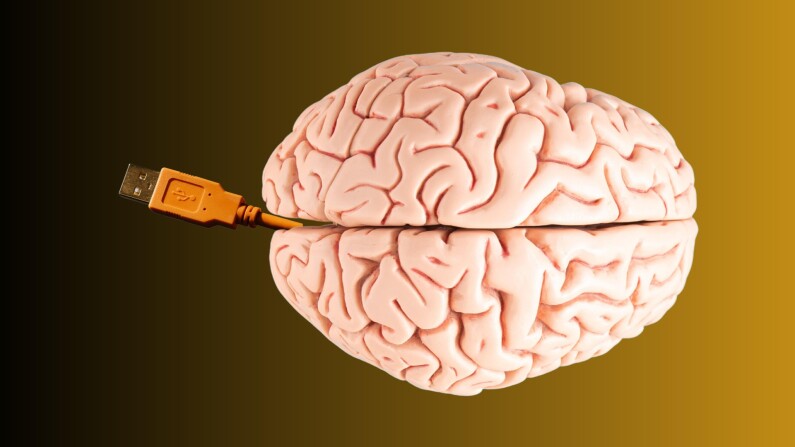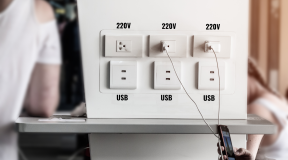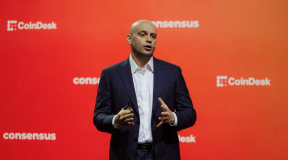Modern science is advancing rapidly, rendering the once-fantastical scenes of science fiction—where a hero instantly learns a new language or communicates telepathically—ever more plausible. In 2024, Elon Musk's company Neuralink successfully implanted a “smart” chip, dubbed Telepathy, into a living person for the first time. Meanwhile, scientists are actively employing brain implants to treat conditions such as depression, Alzheimer's disease, and even paralysis.
Neurobiology is truly astonishing today, and in this article, we will explore its most captivating possibilities and achievements!
Elon Musk's “smart” chip: the potential of Telepathy
Neuralink has existed for some time, yet its ambitious initiative to create new brain-computer interface chips only emerged in 2019. Its primary aim is to enable telepathic control of devices, eliminating the need for cursors, joysticks, or any physical actions. Ultimately, this technology could significantly expedite tasks—such as instantly accessing updated information without a smartphone—and greatly enhance the lives of individuals with disabilities. This includes those who are paralysed or have conditions like Parkinson's disease, Alzheimer's, or nerve damage. Imagine a future where you can operate a coffee maker with merely a thought or compose messages, social media posts, or even full reports mentally!
Elon Musk's team spent several years conducting animal tests for their development. In 2020, they successfully implanted a chip in two pigs and later removed it without jeopardising their health. Furthermore, tests on monkeys demonstrated that one monkey could control a cursor on a computer screen using its mind. However, Neuralink faced substantial backlash when journalists and animal rights groups revealed that over 1,500 animals died during these experiments. Consequently, the company is still under investigation.
Elon Musk's primary aim, he asserts, extends beyond simply enhancing life for those with mobility challenges. He envisions nurturing a true symbiosis between humans and artificial intelligence, akin to scenarios depicted in Cyberpunk-themed films and games. However, it is crucial to start with basic tasks, and currently, the first objective is to achieve mental control over a keyboard.
In spring 2023, Neuralink received approval to commence experiments. By autumn, the company had recruited its first volunteers, particularly individuals who were paralysed due to spinal cord injuries or amyotrophic sclerosis. The first participant successfully underwent the procedure and, according to updates from Elon Musk on social media, is recovering well. Nevertheless, Neuralink has not provided further information about the surgery or the individual, making it difficult to assess the progress of the chip's development.
At least we know how the chip works: it is a small, coin-sized device equipped with a microprocessor connected to the brain through 64 ultra-thin threads (thinner than human hair). These threads do not trigger inflammation or rejection and hold 1,024 electrodes, the highest number among similar devices. The electrodes capture electrical signals from the brain, translate them into digital code, and transmit this data to an external device such as a mobile app. While the initial version of the chip required a USB connection to a computer, the latest iteration is entirely wireless. However, the implantation process necessitates the removal of a small piece of the skull, which the chip subsequently covers. Additionally, the chip can be wirelessly recharged using a specialised cap. Unsurprisingly, the procedure is costly; reports indicate that the minimum price is currently £11,000, excluding insurance.
Interestingly, in September, Neuralink developed and tested a chip called Blindsight for the first time. This device can restore sight even to people who are blind from birth, have no eyes or ocular nerves. Blindsight connects directly to the visual cortex of the brain, requiring only its intactness for successful operation. After implantation, vision gradually returns to prevent overload. Initially, the individual sees it as “low quality,” reminiscent of a video game, but the resolution improves over time. The chip effectively “broadcasts” the surrounding environment into the brain, enabling the person to be able to see even in the infrared or radar spectrum.
Brain stimulation aimed at restoring the ability to walk and enhance quality of life

On another note, Elon Musk is criticised not only for his cruel treatment of animals but also for the perceived ineffectiveness of his research. Critics suggest that brain implants are not a groundbreaking concept, as this technology has existed for years, albeit it has not been fully explored for connecting humans to computer systems. However, these implants and chips have the potential to restore some mobility to those who are paralysed.
The procedure involves implanting a device in the brain that uses electrical impulses to stimulate areas responsible for motor function. This technology is presently employed to treat conditions such as Parkinson's disease and spinal cord injuries. When combined with rehabilitation, it enables patients to regain control of their legs, allowing them to walk up and down stairs independently. For instance, Wolfgang Jaeger, a 54-year-old who had been in a wheelchair for over 15 years, was able to walk again thanks to this stimulation. Studies indicate that these electrical impulses activate the lateral hypothalamus, which plays a vital role in stimulating movement as it is directly linked to that region.
Implants used to treat mental illnesses such as depression function similarly. For instance, an American, John Nelson's depression was so severe that he could hardly walk his dog until he participated in a medical trial involving neurostimulators. Thirty-six-year-old Sarah had a similar experience under the supervision of researchers from the University of California, as reported in the journal Nature Medicine.
The procedure involves implanting a device the size of a coin, fitted with 30 electrodes, into the skull during a 30-minute surgery. The device monitors brain activity for 10 days to identify where “unwanted activity” occurs. For Sarah, her enduring depression was linked to the activity of her amygdala. Subsequently, the device emitted mild electrical impulses to her ventral striatum to suppress the amygdala. It was programmed to activate whenever the amygdala displayed activity, resulting in Sarah receiving approximately 300 electrical stimulations each day, but only during daylight hours to ensure her alertness. While Sarah does not perceive the stimulations, after two weeks of using the device, her depression score decreased from 54 to 10 on the Montgomery-Asberg scale.
Scientists suggest that electrical impulses can also target different regions of the brain associated with various mental and neurological conditions. This technology demonstrates great potential for enhancing cognitive functions in the elderly and those who have suffered brain or spinal cord injuries. The application of electrical impulses in brain treatments signifies a major scientific milestone. Neurobiology now offers the opportunity to delay numerous hereditary and acquired diseases that had no treatments merely a decade ago. The possibilities of telepathy and computer integration pale in comparison to the groundbreaking advancements in neurobiology!
Share this with your friends!






Be the first to comment
Please log in to comment